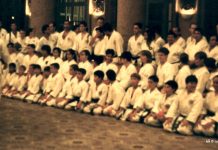Flat Feet – Pes Planus
A Flat or lowered foot is commonly seen in small children. According to the research, 55% of children from the ages of 3 to 7 suffer from flat feet. In adults this percentage goes down to about 30%. The development of this deformation is linked to our present way of life. The way we travel results in the lowered use of foot muscles, both in developing children and in adults. Today, we rarely walk on rough terrain or barefoot which is important because such activity strengthens the muscles of the feet.
In the normal foot we have two arches: longitudinal and transverse. Usually, the longitudinal arch is first released, though it is not excluded that both can be released at the same time. Even though every child is born with flat feet (pes planus congenitus), it is well known that this kind of flat feet as a deformation is corrected as soon as children start to rely on their feet and then begin to use their own musculature, which then gradually leads to the formation of the sole of the foot.
Unfortunately, the modern way of life that makes us move less and sit more, as well as the use of various inadequate footwear, and the increasingly frequent overweight of many people, also contribute to the emergence of flat foot deformation both in children and adults. It is obvious that certain professions where people are less likely to move or sit for longer or spend longer time with a certain amount of inadequate footwear, can potentially cause this deformation. With women, flat feet deformities often appear during pregnancy.
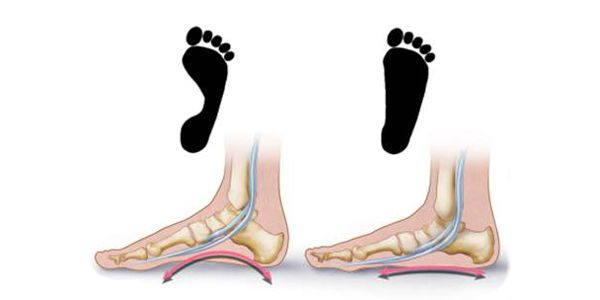
The easiest flat foot form or the first stage in the development of this deformation occurs by weakening and lowering the foot muscles, primarily those holding the longitudinal arch. This stage is the most common and it is called pes valgus. The second stage in the development of flat foot deformation is called pes plano – valgus, in which foot musculature gets atonic to a somewhat larger extent, and where changes occur in the ligaments, and the Achilles tendon is slightly more distorted. Both of these degrees of deformation can be most commonly found in younger school children, but are also common in young people as well as in older people. The third, and especially the fourth degree of deformation of the feet are less common and they have to be treated in certain medical institutions. People whose feet are deformed to such a degree are often characterized by a special way of walk because such persons use the entire width of the foot , accompanied by lots of pain.
The treatment of the first two stages of flat foot deformation will usually start with the use of the orthotics (shoe inserts) to improve the foot position. Such insoles are made of a suitable material, most often of a softer plastic mass or harder sponge mass and in combination with leather. Certainly, people with foot deformation should wear the insoles, but they will not yield the desired results without active exercises that develop the feet muscles. The most effective combination is the use of orthotics and the required foot muscle strengthening exercises, because the shoe inserts in that situation will have a task to preserve the condition achieved by exercising.
Flat Foot Exercises
Many people with flat feet deformity do not realize the importance of exercising certain foot muscles in order to strengthen them and, therefore, firm the foot. It is often thought that if the person with the deformation of the foot wears the insoles, it will solve the problem of the flat foot. Unfortunately, such an opinion is a big mistake. Also, it is wrong if children are forced to wear these insoles without gradual training, especially when they are small.
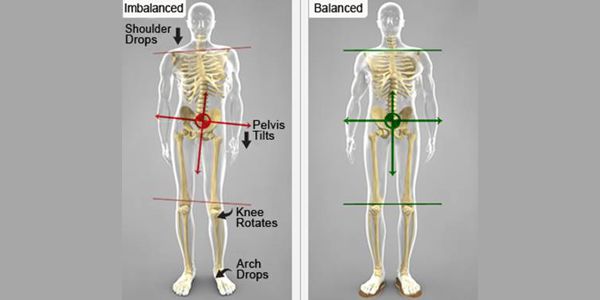
People do not often understand the extent of a flat foot problem as well as the consequences of the foot deformation. People with flat feet deformation have irregular way of walking and thus have more frequent pain in the legs, calves, but also in the knees. People have poorer circulation as well as more frequent muscular pains. They often have pain in the hip, lower back, but also in the neck muscles, which is why they have more frequent headaches. Also, such persons are prone to spinal column deformation and have poorer posture and often have some spinal deformities such as -scoliosis, lordosis, or kyphosis. Sometimes they even have a slightly lowered shoulder, and therefore a worse posture of the body.
The physician’s recommendation to people with flat feet deformations will certainly be to walk barefoot on the possibly uneven ground because this is how the foot muscles get activated.
This advice can also suit preventive purposes in all children, whether they have normal or flat feet. For this very reason, taking up certain martial arts leads to the removal of flat foot deformation. People that exercise certain martial arts such as; judo, karate, aikido, sumo, kendo, ju-jutsu, tae kwon do, kick-boxing, muay-thai, kung fu, hapkido, MMA, grappling, kalaripayattu, capoeira as well as some others; practice yoga, are frequently barefoot while performing. This is just the way that people with flat feet deformation will benefit from.
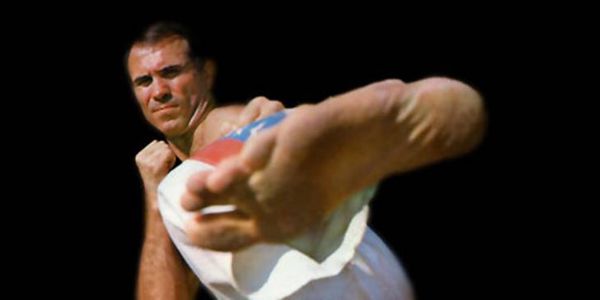
Frequent walking barefoot, combined with various exercises, leads to strengthening the foot muscles. Also, by performing a variety of foot kicks, like in karate or tae kwon do, exercising basic front kick (mae-geri, ap-chagi), side kick (yoko-geri, yop-chagi) or front hook kick (mawashi-geri, dolyo-chagi) as well as other ones, the exerciser develops the feet muscles. Each of these different kicks requires the practitioner to set the foot in the exact position, regarding the impact surface, i.e. the surface of the foot, by which the trainer will strike a particular foot kick. For example, for the aforementioned strikes, the names of the foot surface striking the opponent during their performance are: chusok (apkumchi), sokuto (balkal) and haisoku (baldung). Whilst performing each of these strikes, the practitioner must place the foot in a precisely defined way, i.e. in an adequate position. Thus, practitioners strengthen and develop the feet muscles that help to eliminate flat foot deformation. Only a few foot strikes have been mentioned as examples though, of course, martial arts have much more exercises in themselves with a large number of different kicks . It is very important that your toes and feet are in the correct position to achieve good treatment results.
Although useful, walking barefoot in a gym with flat floor or on the mat (tatami), will be too soft for the practitioners’ feet. Only when barefoot practitioners come out in the yard of their club (martial school or centre) they will feel the difference and activation, i.e. tightening of certain foot muscles that help to eliminate the flatform deformation. Many instructors of different martial arts practise exercise in the nature, insisting that the practitioners are barefoot. That’s why you can often see lots of practitioners of various martial arts practicing barefoot in a nearby park, at a nearby car park, along the banks of the river or on the seashore, in a forest or on a mountain, many of them doing it in the summer months by the sea on a sandy beach but also on the snow in the winter.
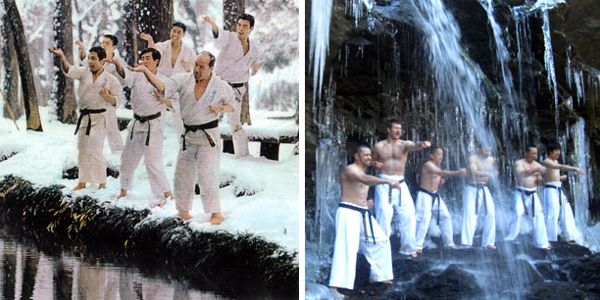
Many older masters of various martial arts just encourage their disciples to practice more often in the open air and barefoot. They have learnt and inherited such a way of training from their teachers. Unfortunately, some younger masters consider this to be outdated and unnecessary. They find that in the modern training there is no need for something like this. Most of them think that the exercisers who perform exercises barefoot, especially on a rough terrain or in winter, are taken there with a task to harden themselves. In the other words, many of them consider this to be an unnecessary fanaticism of the older masters and their basic desire to harden the body of the disciple as well as to strengthen the impact surface of the foot and make it tough. Certainly, we could state this as one of the reasons for barefoot workout in the nature, but not the only one. Unluckily, today younger martial arts instructors do not accept the strengthening of foot muscles and elimination of the flat feet deformation as the main reason for such exercise in the nature. The old masters of martial arts obviously knew much about the human body as well as about the importance of strengthening the foot muscles.
More recently, there has been a large amount of different equipment in gyms (dojo) so that barefoot children often jump on mats, walk on ladders, various smaller benches, boxing bags, or the like. Instructors often create different games for their kids and make them interesting and entertaining. Plenty of these games are very suitable because they require a lot of movement, i.e. jogging and jumping, and all of that leads to strengthening the foot muscles. Very often instructors also create exercises in which children have to walk on tiptoe or on their heels. Children, however, unconsciously choose one of the games that favour the development of certain leg and foot muscles, such as various jumps or skips over obstacles. Children also sometimes play with the belt, so that they tie it around the leg, i.e. around the foot, pulling each other, or they play various games walking on tiptoe, and raise some smaller objects with their toes. Many of these games favour the development of the foot muscles.
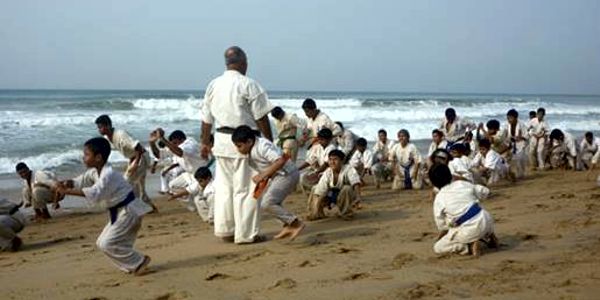
The exercises of some martial arts are suitable for adults who have flat feet deformity but no time and no habit to walk barefoot. Such persons will strengthen their feet muscles and greatly alleviate the existing problems. Strengthening your foot muscles and eliminating flat foot deformation is a long-lasting process so that a person should have patience as well as exercise willpower. There is no need to give up exercising because some doctors say the exercises can only slightly alleviate the adult flat foot condition. In practice, things are different. Although it will take a long time, depending on the degree of deformation, the condition of the practitioner’s feet deformation can be greatly improved. There has been really great improvement of the condition of many adults. Many people who have experienced a significant improvement of flat feet deformity practiced yoga, and a significant improvement has been also found in those who practiced some of the eastern martial arts skills. Frequent walking barefoot, as well as striking leg kicks, with raising or bending the toes, as well as balancing on one foot (lifting the body on tiptoe) such as for instance in some judo throws (or in sumo, ju-jutsu, too)- all of them strengthen the foot.
Ancient Techniques for Treating Various Health Issues with Foot Massage
The first information on foot massage as well as the treatment of certain health problems by pressure on certain areas on the foot were found in Asia (China, India) and date up to 3000 years BC. Ancient peoples like the Egyptians, Persians, Asirians, as well as the ancient Greeks and Romans, knew various foot massage techniques. There is a well-known note on foot massage from the pharaonic doctor Ankhamor from the 2330 BC. Foot massage was also described by the legendary Greek physician Hippocrates (460-377 BC), as well as the famous Arabic physician and philosopher Avicenna (979-1037). Not long ago there was a US scientist called William H. Fitzgerald (1872 – 1942), who studied ancient methods of treatment by certain pressure and foot massage, used by American Indians in both North and South America. Interestingly enough, almost the same methods of massage as well as pressure treatment were used in old China, India,Thailand, in old Japan,too.
The Japanese have the popular shiatsu (shiatzu) massage – foot massage performed by pressing certain foot areas with fingers (shi-fingers, atzu-press).
Ayurvedic massage has come from India as well as a special padabhyanga foot massage, while the American scientist Fitzgerald called his method of foot massage therapy – reflexology.
Obviously, the ancient doctors knew about the usefulness of well-developed foot muscles as well as the importance of a proper foot appearance. It was known to them that the foot consists of 26 smaller bones connected with 33 joints, and a multitude of muscles, ligaments and tendons that join them together. On the feet there are also about seven thousand nerve endings associated with all parts of the body.
All of the above facts were known by ancient masters of various martial arts who were well acquainted with the man’s anatomy as well as treatment methods, but also various kinds of massage, as well as the massage by pressure on certain parts of the foot. Chinese martial arts specialists agree that knowledge of massage and the skill of its use in China, is as old as Chinese martial arts. The importance of massage on certain parts of the foot is so significant that there is a central point on the foot, considered to be the key to recovery after effort, in China known as – Yong quan, in Japan known as – KI (inner energy).
It is certain that the old masters of martial arts knew a lot about the human body as well as about the importance of strengthening the foot muscles.



